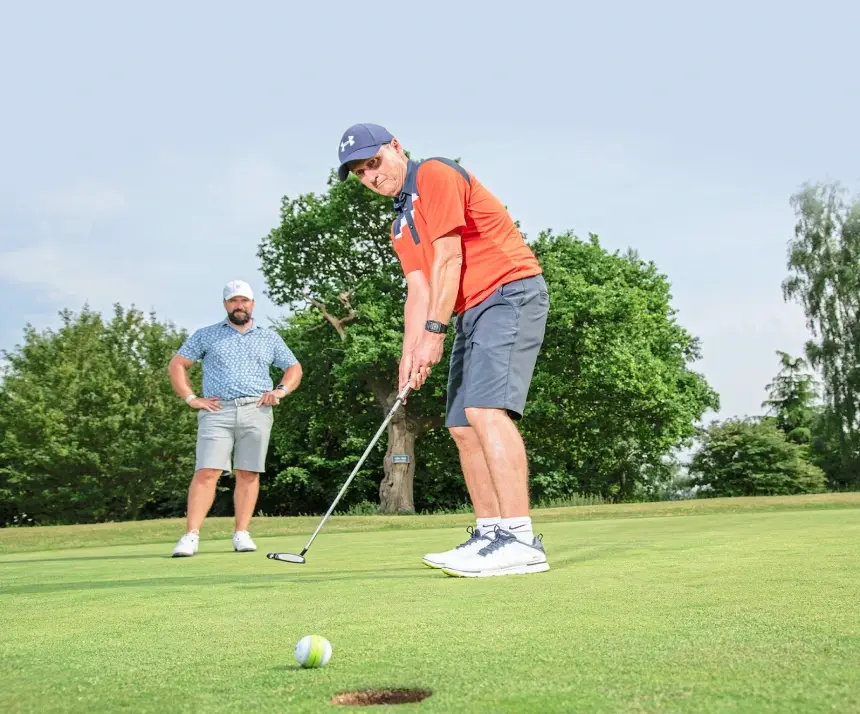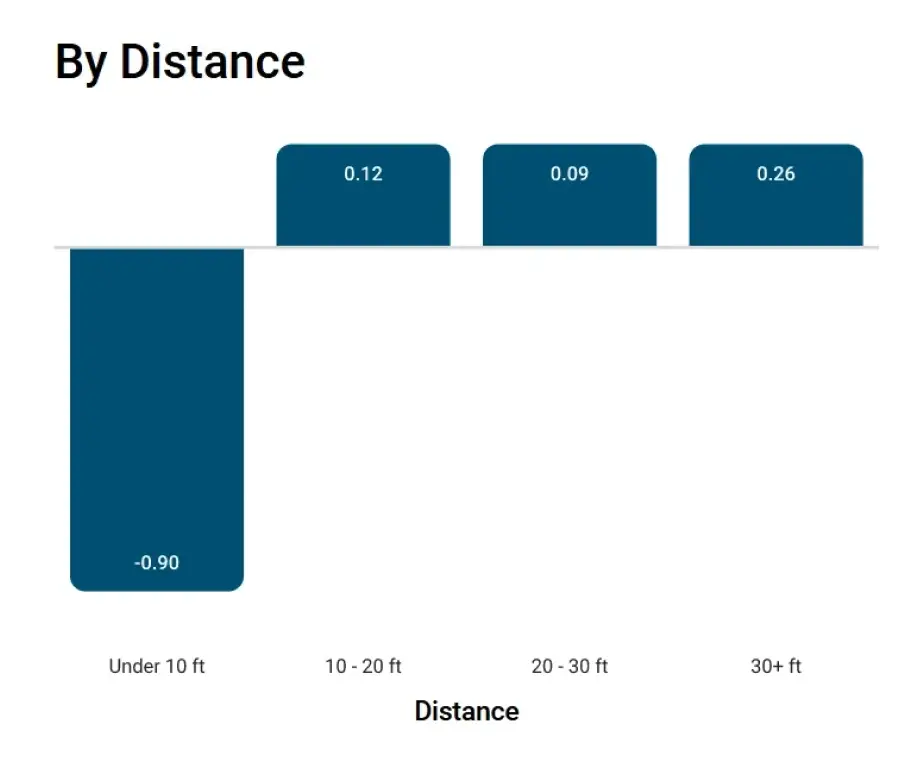18 HCP Case Study
With Peter Finch, in partnership with

Track your performance
Featured on cutting-edge devices like the Shot Scope X5/V5 watches, CONNEX mobile-enabled tracking tags, or the PRO LX+ laser rangefinder, Strokes Gained allows us to compare our performance with every section of the bag against our handicap and discover where we are better and worse than them.
Analyse your statistics
Dig deeper into the data to see what is actually happening – for example, your driving may be costing you the most shots per round, but is that down to distance or accuracy? If accuracy, what is the miss pattern?
Get help from a coach
Enlist professional help to work out what is causing the problem, and put a plan in place to deal with it.
3 Simple steps to
improving fast
Shot Scope and Peter Finch, in partnership with Today’s Golfer, present three simple steps to help you improve your golf game fast, with the help of performance tracking products such as the V5 GPS golf watch. The case study below details how Peter Finch used these three steps to help an 18 handicap golfer, Gavin Langford improve his golf game.
18 HCP Golfer Case Study
Peter's take on Gavin's
Shot Scope data
As for putting, Gavin is ahead of the average 20-handicapper at all distances apart from inside 10ft, where he’s almost a full shot worse per round (0.9 shots). These two elements represent the two biggest dangers to his scorecard… but also his two biggest opportunities for improvement.
As for putting, Gavin is ahead of the average 20-handicapper at all distances apart from inside 10ft, where he’s almost a full shot worse per round (0.9 shots). These two elements represent the two biggest dangers to his scorecard… but also his two biggest opportunities for improvement.



Focus area 1: Driving
The swing pattern explains Gavin’s power data. In the golf swing, power needs to come from the ground up; his lower body is not allowing him to generate much.
Short-term solution:
Aim a little further left
The data shows a slight tendency to leave the face open and miss right (21% left rough, 32% right rough) so aiming at the left side of the fairway could give Gavin a marginal improvement. But in truth, his progress here will be based on longer-term swing work.
Long-term solution:
Improve lower body motion
From here Gavin needs to work on allowing his lower body to lead the downswing – lead knee and hip working towards the target. In time this will shallow his attack and lead to a much more neutral path through the ball. As well as improving accuracy, this move sets up a far more powerful sequence of motion that will get him up to or even past his peers for distance.
While Gavin is quite capable of making these changes, we are talking long term. Sweeping swing changes like this should not be entered into lightly, and unless you have the time and application, adjusting your strategy and course management is likely to yield better results.
Focus area 2: Putting
This was born out on the golf course. Gavin is a ‘peeker’ on shorter putts, looking up to see the result as soon as the ball is struck… and on occasion, slightly before. This unwanted head movement affects his strike quality, his consistency and ultimately his confidence – which of course only makes him want to peak all the more.
Short & long-term solution:
Point of attention
Before, like most of us, he looked at the ball while putting. But with that stationary ball about to move, this can prove an unreliable focus when we want to keep things stable and precise.
Option 1:
The space between
Create a tiny space between the putterface and the ball, and focus on that. Some golfers find it easier to focus on negative space rather than positive – in other words, the gap between two objects rather than two objects themselves. I asked Gavin to try this and his tendency to peek instantly vanished. He also reported a subtle visual imprint after the ball had been struck, almost as if the gap was still there – a strange but useful sensation in anchoring your attention.
Option 2:
Point in path
Find a point on the line of the putt, within the first 18 inches, and lock your eyes on that through the stroke. For golfers like Gavin, conditioned to looking at the ball, this takes a small leap of faith. He voiced a fear this would cost him strike consistency, but after hitting a few putts the fear evaporated. We are only talking shorter strokes for putts under 10ft, and we don’t have to be looking at the ball to find the putter’s sweet spot. While this focus shift certainly improved Gavin’s peeking, this approach needs a little more time to get used to, with some practice green sessions advisable before taking it to the course.
Track your shots
to record improvement
The final tip from Peter, is to persevere with the adjustments made in the lesson, and monitor how the changes effect performance. The best way to monitor performance on the golf course is by tracking your game with Shot Scope.
The final tip from Peter, is to persevere with the adjustments made in the lesson, and monitor how the changes effect performance. The best way to monitor performance on the golf course is by tracking your game with Shot Scope.
